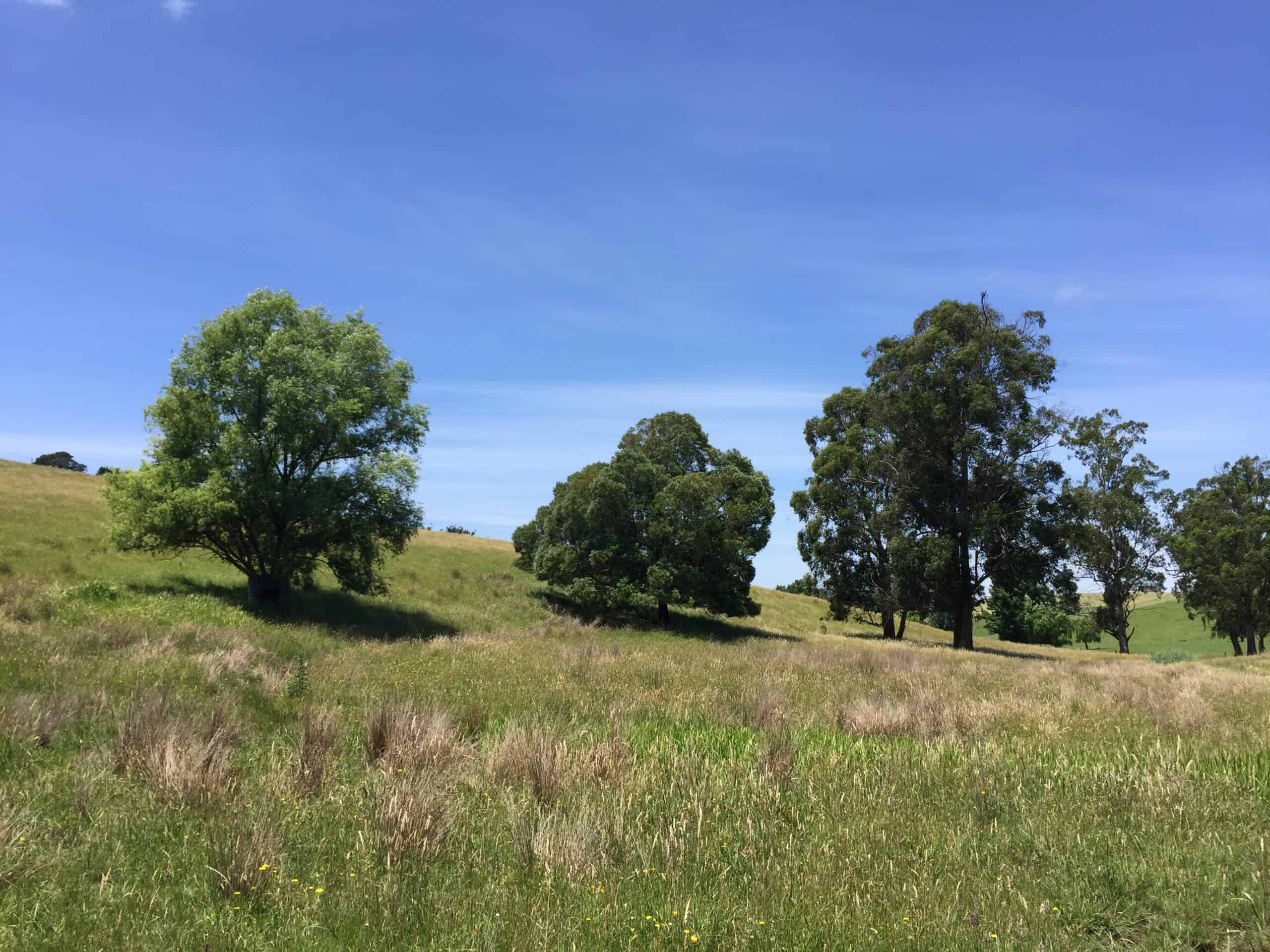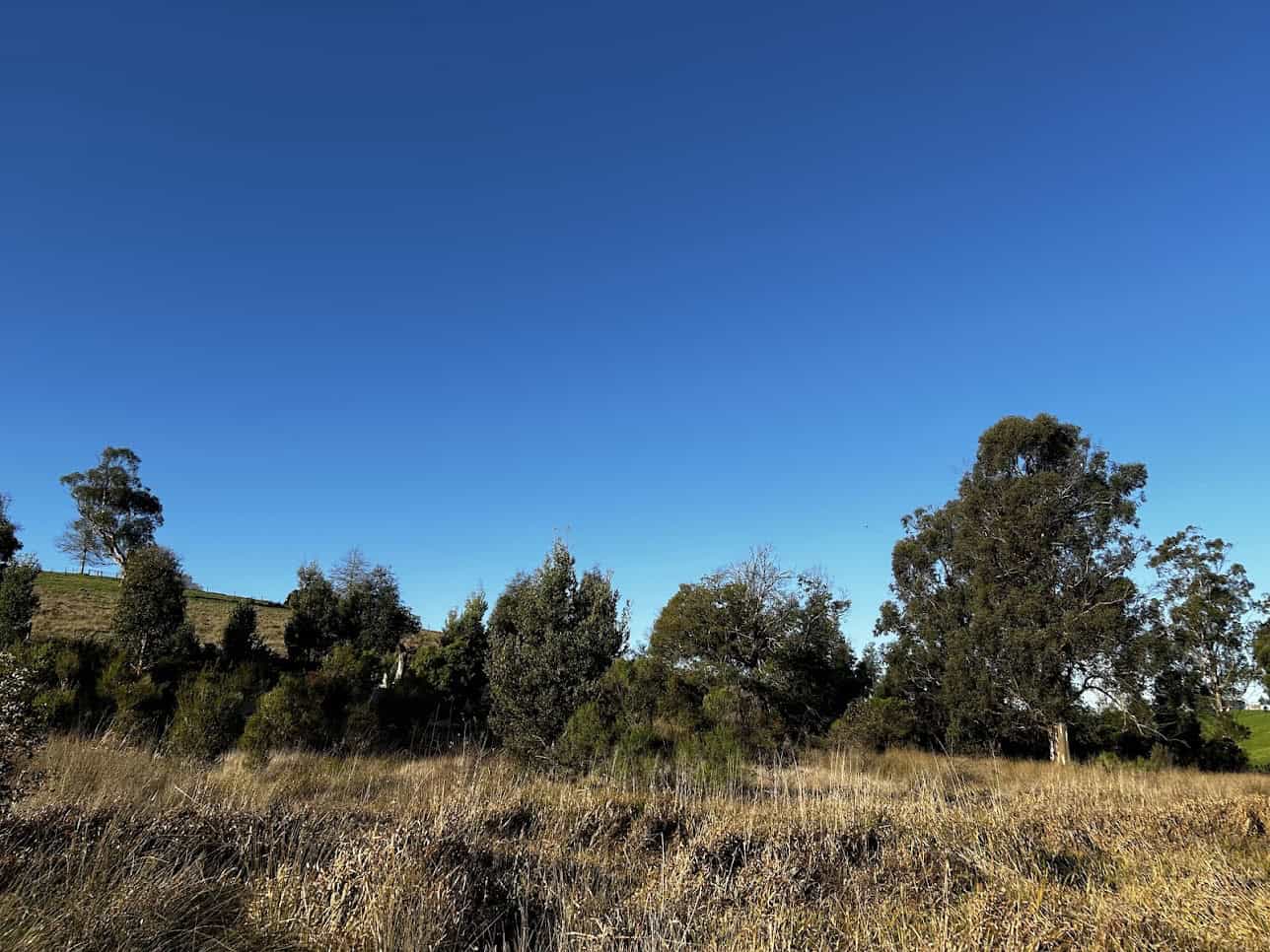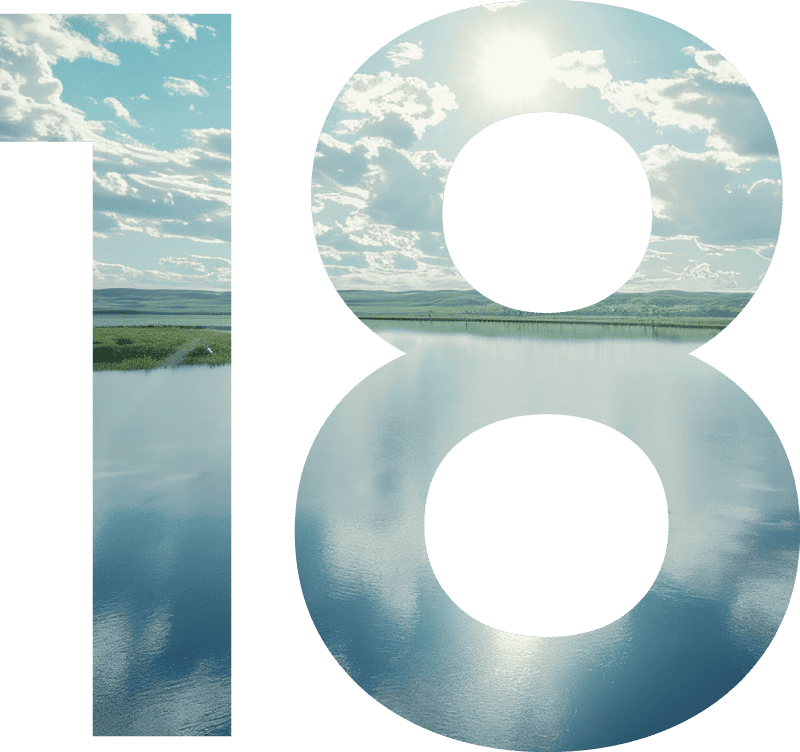
The Neerim South conservation site before revegetation

Fresh growth on display at Neerim South conservation site during recent visit
Gippsland Water has helped boost the local population of endangered Strzelecki Gums (Eucalyptus strzeleckii) with a successful revegetation program in Neerim South.
The small population is found in a conservation site Gippsland Water manages near Neerim South wastewater treatment plant and Red Hill Creek.
Revegetation has several benefits, including the reduction of soil erosion, increased soil fertility and improved plant and animal biodiversity.
Nearly 2,000 locally indigenous plants were planted at the four-hectare site in 2018 and 2019 and have since flourished.
Recent site inspections revealed the program had enhanced overall habitat quality and resilience for the gums.
Managing director Sarah Cumming said the organisation was highlighting the project in the lead-up to World Environment Day on Wednesday, June 5.
“The theme of this year’s World Environment Day is land restoration, desertification and drought resilience,” Ms Cumming said.
“For us it’s an opportunity to reflect on the work we’ve done to restore vegetation and increase biodiversity, and consider how we apply our learnings in the future.
“We will continue to protect natural assets like the endangered Strzelecki Gum against pest species and other threats so they can remain part of the natural environment for future generations.”
Strzelecki Gums are also found at conservation sites at the Drouin and Warragul wastewater treatment plants.
Gippsland Water manages several biodiversity sites in locations like Sunny Creek, Rawson and Mirboo North.
To find out more about Gippsland Water’s role in biodiversity, visit www.gippswater.com.au/biodiversity.
Photo caption: The Neerim South conservation site before revegetation.


